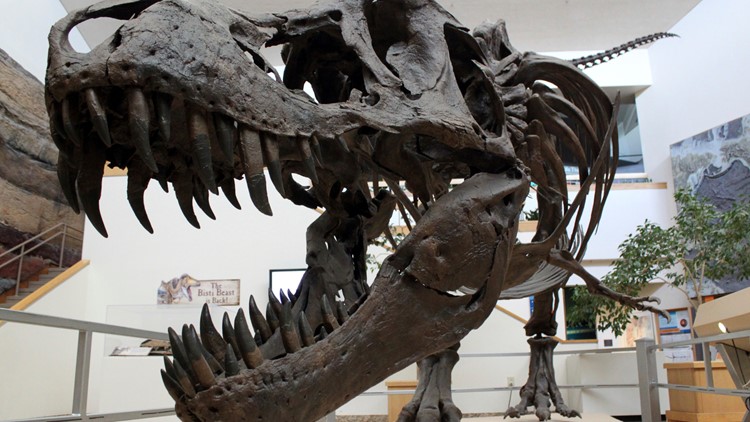The Tyrannosaurus rex may have had tiny arms, but scientists now say two large holes in its skull acted like built-in air conditioning.
According to a new study published in The Anatomical Record, researchers say two holes on top of the dinosaur's head were likely filled with blood vessels that helped the T-rex regulate its body temperature.
These holes were previously thought to have been filled with muscles used to help move the massive, meat-eating dinosaur's jaw.
Large animals like the T-rex needed internal ways to cool down, as their immense size and movement generated a lot of heat.
To help get to this built-in A/C conclusion, researchers used thermal imaging tools to examine alligators at the St. Augustine Alligator Farm Zoological Park in Florida. The thermal imaging tools translate heat into visible light.
The team found that alligators have holes in their skulls filled with blood vessels. Fossils and 3D images of the T-rex show the dinosaur had similar holes.
"An alligator's body heat depends on its environment," co-author Kent Vliet said in a release.
The professor at the University of Florida said his team noticed hot spots in the alligator's holes when the animals were trying to warm up. And, when the day got warmer, researchers said the holes appeared dark, "like they were turned off to keep cool."
Co-author Casey Holliday said researchers "now have a lot of compelling evidence for blood vessels in this area, based on our work with alligators and other reptiles."



